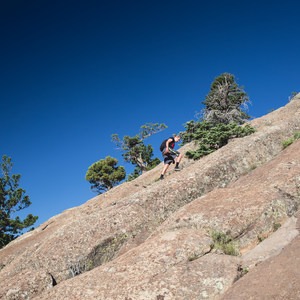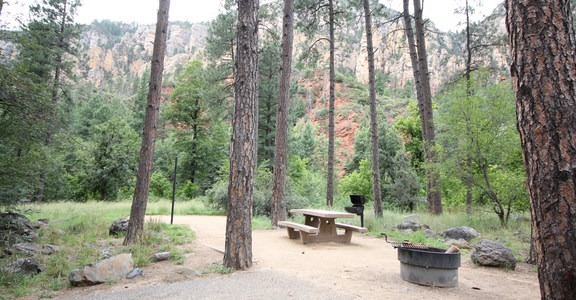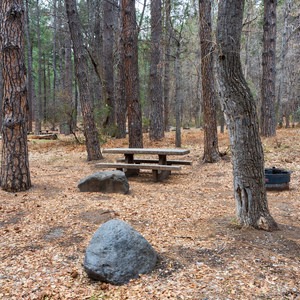In an area known for exceptional trails and scenery, Picture Canyon remains a unique local treasure in Flagstaff. The area is notable for its Native American history, for flowing water and wetland habitats, and for Flagstaff’s only year-round waterfall. The truth is that the water comes from the local wastewater plant, but it’s sufficiently treated for environmental use before being discharged. In the past water flowed here naturally, in the Rio de Flag, for much of the year. Perhaps that made this canyon an important cultural site for the Sinagua people. Their etchings on basalt outcrops are what Picture Canyon is named for, and many of them are still visible today. Well-traveled trails lead to an overlook of the waterfall and to up-close views of the ancient petroglyphs, plus good wildlife viewing opportunities, all right here within Flagstaff city limits.
Picture Canyon’s trailhead parking is within view of the water treatment plant, and a large cinder mine can also be seen in the form of a carved up hillside. A natural gas compression station is nearby as well, but the trails soon leave these industrial surroundings behind, and enter a pine-forested valley where wildlife is abundant. On the ponds you’ll see ducks and maybe a great blue heron. In the meadows and woods you might see mule deer or even elk. Reeds and sedges grow thick around the water in summer, and flowers color the hillsides.
A number of connected trails weave throughout the area. Some junctions are signed and others are not, because some of the paths are social trails rather than official trails. To efficiently find the waterfall and then the largest petroglyph panels, follow the Tom Moody Loop beginning in a counterclockwise direction from the trailhead. You can then complete a longer loop by staying on this trail, or make a shorter loop with the Don Weaver Trail or the Flagstaff Loop/Arizona Trail.
Of course it’s important to never touch the petroglyphs or even the rock around them. These are irreplaceable artifacts which are easily damaged. There are other historical relics which you can see on the trails as well, including Native American dwellings. These should be viewed only and never touched entered, in order to preserve them. Some of the historic sites are signed and others are not. That means you should tread carefully everywhere you go, but also means you can discover even more by always looking and listening carefully.


























Comments
Sign In and share them.